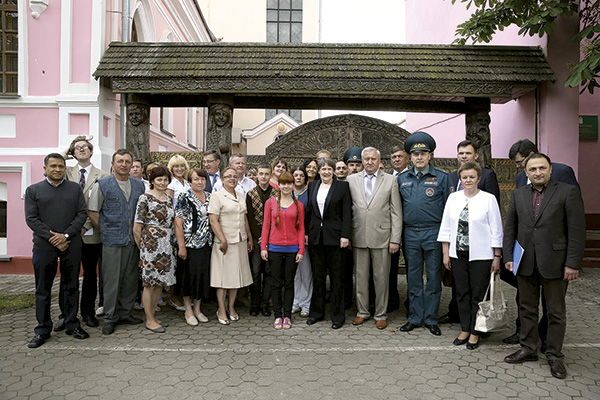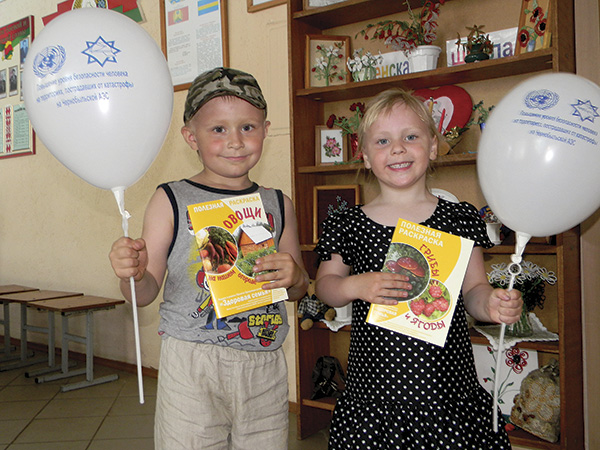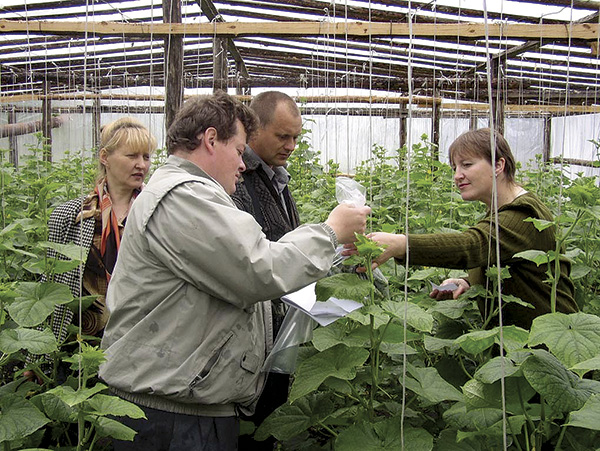On 26 April 1986, an accident happened at the Chernobyl power plant near the Ukrainian town of Pripyat. Explosions destroyed the casing of the nuclear power plant’s reactor and the resulting fire lasted 10 days, sending a radioactive cloud over most of Europe. Around 70 percent of the radioactive fallout rained down on the territory of the Republic of Belarus. According to official reports, 31 people died immediately and 600,000 ‘liquidators’, involved in fire fighting and clean-up operations, were exposed to the high doses of radiation. Based on the official reports, more than 8mln people in Belarus, Ukraine and Russia were exposed to the radiation. Nearly 23 percent of the Republic’s total area was contaminated, heavily affecting lifestyles and economies in 21 regions.

The Chernobyl accident has significant social consequences. A lot of small towns and villages near the station had disappeared with hundreds of thousands people evaquated in the safe places and emigrated to permanent residence in other districts. The catastrophe had enormous economic consequences. According to some estimates, the sum necessary to overcome the consequences of the technogenic accident makes up more tham two hundred billion dollars. Missed profits and investment opportunities are estimated at US$ 13.7 billion.
During the first four years after the Chernobyl accident the Soviet authorities decided to largely deal with the consequences of the explosion at a national level. Without Soviet support, the United Nations and its partners sought ways to provide emergency support, which included assessing the nuclear safety and environmental conditions of the contaminated area, and diagnose the various medical conditions that resulted from the accident. The UN also focused on raising the awareness of the area’s inhabitants, teaching them how to protect themselves from radionuclides found in the environment and agricultural products.
Many count the year 1990 as a crucial point in the United Nations involvement in the Chernobyl recovery. The Soviet Government acknowledged the need for international assistance. As a result, the General Assembly adopted Resolution 45/190, which called for ‘international co-operation to address and mitigate the consequences at the Chernobyl nuclear power plant’. This Resolution also entrusted one of the Under-Secretary-Ge-nerals with the task of coordinating the Chernobyl co-operation and called for the formation of an Inter-Agency Task Force. The Quadripartite Coordination Committee, which consists of ministers from Belarus, Ukraine, Russia, as well as the United Nations Chernobyl Coordinator, became part of the coordination mechanism at the ministerial level. In 1992, a year after the Task Force was established, the Department of Humanitarian Affairs, which came to be called the Office for the Coordination of Humanitarian Affairs (OCHA) in 1997, began to coordinate international co-operation on Chernobyl. To expedite financial contributions towards the Chernobyl activities, the Chernobyl Trust Fund was established in 1991 under the management of the OCHA. The OCHA began to manage a range of diverse tasks and responsibilities from strategy formulation and promotion to resources mobilization, advocacy and channelling donors’ contributions. Since 1986, the United Nations organizations and major Non-Government Organizations and Foundations have launched more than 230 different research and assistance projects in the fields of: health, nuclear safety, including the construction of the Shelter, socio-psychological rehabilitation, economic rehabilitation, environment and production of clean foods and information.

Visit of Helen Clark, the Administrator of the UN Development Programme, the Under-Secretary General of the UN in Vetka, April 2015
Over time it has become clear that the task of environmental and health recovery cannot be separated from the task of development. Since 1988, the global community, led by the United Nations, launched and successfully implemented around 80 various assistance, development, and research initiatives focused to advance socio-economic development, promote safe living, and restore a sense of community self-reliance. In 2001, the UNDP, and its regional director for the three affected countries (Russia, Ukraine, and Belarus), became part of the coordination mechanism for Chernobyl co-operation. In the following year, the United Nations announced a shift in strategy, with a new focus on long-term developmental approach, as opposed to emergency humanitarian assistance.
After 30 years of rehabilitation activities, sustainable social and economic development coupled with sound and plain information on how to live safely on the affected territories still has an important role to play in mitigating the consequences of the Chernobyl disaster that had lowered the quality of life in the affected regions of Belarus.
The new approach to Chernobyl recovery was first recommended by a 2002 UN Report entitled ‘Human Consequences of the Chernobyl Nuclear Accident. A Strategy for Recovery’. The report emphasized the need to shift from traditional humanitarian assistance delivered in response to an emergency to a more long-term goal, involving developmental area-based approach to tackling problems of the affected population while ensuring continuous provision of primary health care, radiation monitoring and economic development.
The UN designed strategy for Chernobyl affected regions is based on the assumption that local communities are in urgent need for better economic and social development, a restored sense of community self-reliance, and the information required to overcome stigma and fears, associated with radiation and ‘contaminated’ label.

Small participants of the health fair within the framework of ‘Enhancing Human Security in the Chernobyl Affected Areas’project
With the help of the UN agencies and other international partners, affected regions of Belarus managed to undertake a transformation from a humanitarian aid recipient to a reliable partner with good potential in successfully implementing long-term local development polices in the regions, making them a more attractive environment for life.
Implemented by the UNDP ‘Strengthening partnerships and resource mobilisation mechanisms to mitigate the negative consequences of the Chernobyl disaster’ project (2003-2004) was shaped to identify information needs of the population living in the Chernobyl-affected geographical area of Belarus. Sociological and interactive surveys covered more than 2,600 respondents from various social groups and local communities in the affected areas. The surveys implemented recommendations of the new Chernobyl approach focused on local people as key actors into undertaking rehabilitation and development activities.
Launched in 2003, the UNDP led ‘Co-operation for Rehabilitation’ (CORE) Programme (2003-2008) was the first large-scale, multi-partnerships initiative that targeted the improvement of living conditions in four Chernobyl affected districts by reaching out to the people themselves, helping them to contribute to formulating the specific individual and common project proposals. The initiative was designed as a coordinating instrument for the implementation of various projects in four priority areas: health monitoring and healthcare services, the social and economic development of contaminated rural areas, education and cultural heritage and radiological quality control.
The CORE aimed to create sustainable livelihoods, enhance economic, social and cultural development while empowering local communities and encouraging partnerships.
Under the motto ‘Together We Can!’ the CORE Programme helped to generate 191 local project proposals featuring 146 initiatives with total budget around US$9.0 million that were included into the Programme and successfully implemented.
The CORE Programme was the first initiative to demonstrate benefits of active involvement of the communities in the Chernobyl affected areas in the process of rehabilitation and development. Such a pro-active model of participation helped local people to change their attitude and behaviour to social and economic environment in the districts, and motivated to contribute efforts and resources to revive growth and development. The Programme had also influenced the emotional environment of local communities by inspiring self-confidence and belief in a positive change and resilience.
As co-operation with local administrations and the scope of local communities’ involvement in the rehabilitation process expanded, an innovative for Belarus Area-Based Development (ABD) approach was applied in 60 community driven project initiatives that became a driving force for positive changes in social and economic environment in four Chernobyl-affected districts of Gomel Region. The initiatives mobilized more than 11,000 local participants and generated around US$ 3.0 million. The initiatives that are a product of ‘Combat the Negative Effects of the Chernobyl Disaster in Belarus’ project (2008-2010), financed by European Union and implemented by the UNDP, promoted social mobilization practices and good gover-nance among state and non-state actors in the targeted communities.

Participants of the experiment on cultivation of ecologically clean agricultural products in Stolin District of Brest Region
The projects fuelled up pro-active participation of local communities in addressing existing challenges in education and culture, consumer societies, health, municipal services, labour and employment, sports and local tourism, emergency response. Apart from this, the project also conducted first in Belarus large-scale thyroid screening. More than 600 people, including 150 children undertook medical examination for thyroid cancer in Mozyr District of Gomel Region.
In order to make good decisions, people on the affected territories needed sound information. Chernobyl/ICRIN (International Chernobyl Research and Information Network) project (2009-2011) designed to meet the priority information needs of affected communities in Belarus, Russia, and Ukraine and aimed at translating the latest scientific information about the consequences of the Chernobyl accident into accurate, practical advice that will help people live safely on the affected territories. The project was a joint effort of the International Atomic Energy Agency (IAEA), UNDP, UNICEF, and the World Health Organisation (WHO).
Dissemination of scientific data and findings in plain language, accessible to non-specialists, helped dispel widespread misconceptions and fight stigma that afflicts the Chernobyl-affected regions. The ICRIN project activities featured dissemination of information through five rural information centers as well as education and training events for teachers, medical professionals, community leaders and the media.
The efforts of Belarus in mitigation of the consequences of the Chernobyl catastrophe with specific local solutions responsive to needs of the Chernobyl-affected communities received further support within the framework of ‘Enhancing Human Security in the Chernobyl Affected Areas of Belarus’ project (2010-2013). The initiative targeted enhancing smallholders’ businesses, promoting healthy lifestyles among vulnerable populations, improving prevention and treatment of breast cancer, spreading of knowledge in radiation safety in five affected districts of Belarus.
Around 2,190 rural smallholdings received expect and advisory support on livestock growing, crop planting, production of radionuclide free products, product marketing. The project designed and tested mechanisms for providing small loans and micro credits to the rural residents as well as piloted a group co-operation for agriculture produce, rural market access. Thirteen monitoring and information centres for radiation control and safety helped local populations to consume clean milk and other food products, as well raised public awareness on secure living in the affected areas.
More targeted efforts in the health dimension of the human security pillar went through the organized self-support groups of pregnant women and new mothers and introduced breast cancer screening system.
This year, the UNDP wraps up its primary coordinating role in post-Chernobyl recovery and rehabilitation and moves to a supporting role to facilitate sustainable development in the affected areas. Nevertheless, the UNDP in Belarus will continue to be involved in further activities in line with the 2030 Sustainable Development Agenda and priorities on global, regional and national levels.
At strategic level, the UNDP will continue to assist in formulating the Post-2016 Strategy of international co-operation on Chernobyl. It will also continue work on knowledge sharing: sharing the experience that was collectively accumulated of overcoming complex consequences of a nuclear disaster in a broader UN context, including 2030 Sustainable Development Agenda and Sendai Framework of Disaster Risk Reduction, which is crucial not only for the region, but for the entire world.
At local level, the UNDP will focus on creating new partnerships for innovation and investment in the affected regions in order to highlight the utmost priority of peoples’ prosperity as a result of efforts to overcome crises and emergencies and achieve sustainable development.
We will also build on our experience of successful implementation of Area-Based Development in Chernobyl-affected areas, and focus on cultivating local community initiatives in the framework of the ongoing Local Development project, funded by the EU.
By Vladimir Mikhailov











